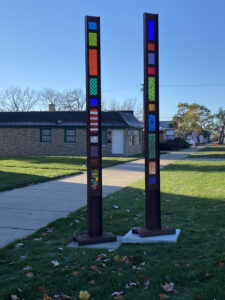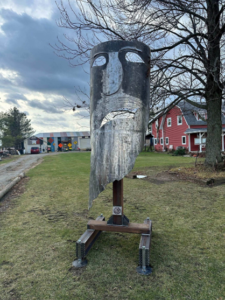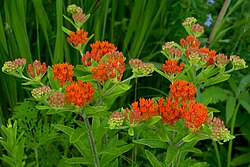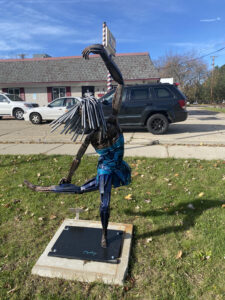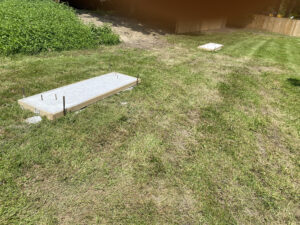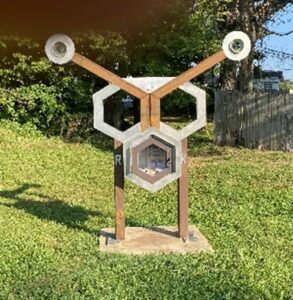
By Israel & Erik Nordin
West side of NB Gratiot between Clinton River Dr. & Kibbee St.
The Bee Reader sculpture at the evolving MCEP Pollinator Park was installed in July of 2024. It will be open to extend gifts of small paperback books for young readers and mature readers. Each month the Bee Reader will have two paperback books available. One geared for younger readers and one for mature readers. Please come and check it out. Each month’s selection will be available on the MCEP website with the book’s description. If for some reason the books are not there just call us on 586 783 6008 and we will replenish the stock.
Great Horse Stories
Compiled by James Daley
Readers who love horses will cherish this blue-ribbon collection of fifteen short stories by such famous authors as Sir Arthur Conan Doyle, Saki, and Erle Stanley Gardner. Suitable for ages 10 and older, these tales of wild and tame horses offer a thrilling blend of adventure and realism.
The collection opens with an abridgment of Anna Sewell’s classic Black Beauty, the moving account of a horse’s working life, pulling cabs in Victorian London. Subsequent stories include “Her First Horse Show” by David Gray, “The Brogue” by Saki, Mary E. Wilkins Freeman’s “The Doctor’s Horse,” “Carved in Sand” by Erle Stanley Gardner, and many others.
Dinosaur Sticker Activity Book
By A. G. Smith
Twenty-one reusable, brightly colored dinosaur stickers: 1. Coelurosaurus, 2. Ankylosaurus, 3. Deinonychus, 4. Protoceratops, 5. Polacanthus, 6. Styracosaurus, 7. Dimetrodon, 8. Protoceratops, 9. Stegosaurus, 10. Ornithomimus, 11. Iguanodon, 12. Archaeopteryx, 13. Triceratops, 14. Pterodactyl,
15. Tyrannosaurus rex, 16. Varanosaurus, 17. Stegosaurus, 18. Apatosaurus, 19. Pteranodon, 20. Parasaurolophus, 21. Ceratosaurus


